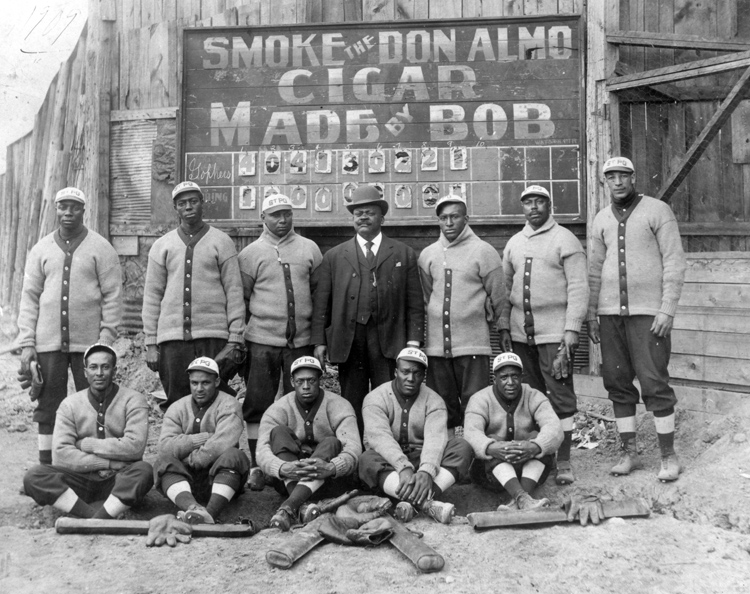

Just as independent baseball clubs preceded the establishment of the major leagues, barnstorming African-American teams paved the way for the creation of the Negro National League in 1920. Throughout the second half of the 19th century and the first decades of the 20th, these pre-Negro League teams toured regionally and nationally, demonstrating by the caliber of their competition that top-flight baseball did not depend on the color of the athletes.
Beginning in 1907 and continuing for the next handful of years, one of the country’s top black teams was the St. Paul Gophers. While the details and statistics are scant (and their opposition was uneven), the Gophers barnstormed throughout the Upper Midwest, playing more than 100 games a season and winning more than 70 percent of them. Over the course of a modern 162-game major league season, such a rate would yield a record of about 113-49.
This photograph of the Gophers was taken following the May 22, 1909, game in Hibbing, Minn., northwest of Duluth (hence the sweaters). On this day, the Gophers (also occasionally called the Colored Gophers) had pasted the host Hibbing club, 17-2, in what the press called, “the worst drubbing Hibbing ever got.” As the season progressed and the Gophers’ win total increased, so too did its fame. Then, in July, the Gophers hosted the Leland Giants of Chicago, widely considered the best African-American team in the country, in a five game series to determine the nation’s best black ball club. After splitting the first four games, St. Paul won the final game of the series, 3-2, prevailing over a Giants lineup that included future Hall of Famer center fielder John Preston “Pete” Hill, and thereby earning the unofficial title of “World’s Colored Champions.”
Over the next couple of years, the best of the Gophers players would be hired away by other, better-financed ball clubs, a common occurrence in the era, and by 1912, the team was only a memory.
Nearly 80 years later, the Minnesota Twins would recreate the Gophers’ feat, bringing another World Championship to the Twin Cities by winning the 1987 World Series and then repeating the feat in 1991. In the years since, the Twins have also paid homage to this great Minnesota team by wearing St. Paul Gophers uniforms during special Turn Back the Clock games.
For additional information about the St. Paul Gophers, see Todd Peterson’s excellent book, Early Black Baseball in Minnesota, (McFarland, 2010)